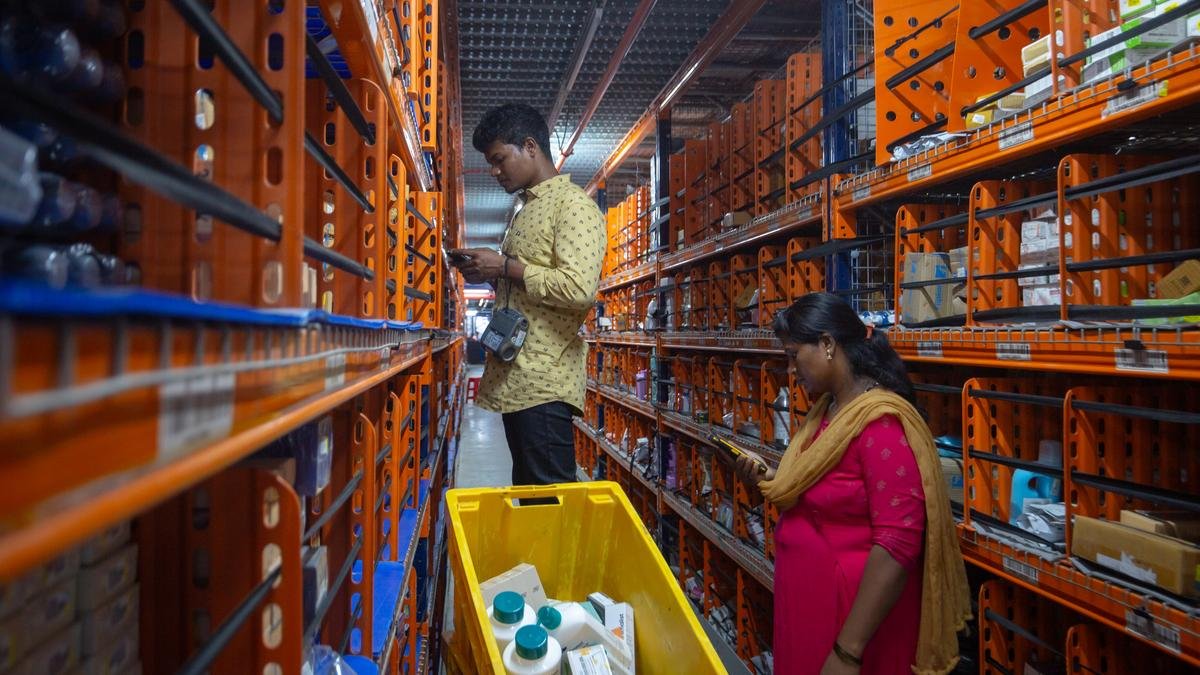
Fulfilment centres are redefining the very fabric of logistics infrastructure, transforming warehouses into intelligent, self-sustaining ecosystems.
| Photo Credit: Getty Images
Over the past decade, sustainability has moved from the periphery to the core of business strategy. As the world confronts a mounting climate crisis, the demand for environmentally responsible infrastructure has become critical, therefore pushing logistics, warehousing, and supply chain to the frontlines of change. Fulfilment centres, once optimised primarily for scarcity, are now reimagined as critical enablers of environmental stewardship. From energy-efficient designs and waste reduction initiatives to smarter resource management, these spaces are evolving to support a more conscious and climate-resilient future.
This shift is not merely aspirational; it is driven by harsh realities like heightened investor scrutiny and consumer awareness, and stricter ESG mandates. As businesses face growing pressure, the urgency of sustainable fulfilment is palpable toward reducing their carbon footprints while maintaining speed, efficiency, and cost-effectiveness.
Green partnerships
One of the most significant shifts is the emergence of green partnerships between retailers and third-party logistics (3PL) providers. Sustainability is no longer a differentiator; it’s becoming a baseline expectation. Retailers are increasingly opting to work with third-party logistics (3PL) partners that invest in renewable energy, deploy EV fleets, and leverage AI to optimise delivery routes. According to Grand View Research, the global green logistics market was valued at $1,507 billion last year, with the Asia Pacific region leading the way accounting for 36.2% of global revenue.
This shift is not purely altruistic. Green logistics partners help reduce Scope 3 emissions. Moreover, with the introduction of mandatory ESG disclosures for large companies in India and increasing interest from global investors, having a sustainable supply chain is becoming essential for brand credibility and compliance.
Future ecosystems
Fulfilment centres are redefining the very fabric of logistics infrastructure, transforming warehouses into intelligent, self-sustaining ecosystems. Designed with sustainability at their core, these hubs use daylight-optimised skylights and smart HVAC (Heating, Ventilation, and Air Conditioning) systems that dynamically adapt to reduce energy footprints. Rooftops are evolving into clean energy farms, harnessing solar power at scale, while integrated rainwater harvesting systems promise to make groundwater dependency a thing of the past.
Inside the warehouses, cutting-edge technology is promoting a radical shift in operational efficiency. Advanced robotics and autonomous systems are eliminating redundant movements, driving both productivity and energy savings. Real-time IoT (Internet of Things) sensors and AI-powered analytics enable warehouses to anticipate maintenance needs and continuously optimise resource usage. Even packaging is getting a futuristic upgrade, with smart systems tailoring box sizes to reduce material waste and AI-driven segregation units that sort recyclable from non-recyclable packaging with precision.
Reimagining last-mile delivery
While warehouses are becoming greener, the real challenge lies in last-mile delivery, often the most polluting segment of the supply chain. To address this, fulfilment centres are rethinking their geographical positioning. Instead of being located on city outskirts, many Q-commerce players are investing in hyperlocal micro-fulfilment centres within urban clusters. This significantly reduces travel distances and fuel consumption.
The adoption of EVs for last-mile delivery is also gaining momentum. Some logistics companies have set targets to convert their entire delivery fleet to electric vehicles over the next few years. Coupled with AI-based route optimisation tools, these initiatives are not only helping reduce carbon emissions but are also improving delivery speed and cost efficiency.
Next frontier
As India emerges as the fourth largest economy and sets its sights on becoming the third largest by 2028, fulfilment centres play an even pivotal role in shaping a greener, smarter, and more resilient supply chain. The warehouses of the future won’t just process orders, they will operate as living, breathing ecosystems. Imagine facilities lit entirely by natural daylight during the day and seamlessly powered by solar-charged energy at night. Floors cleaned with recycled greywater. AI algorithms will regulate the entire operation, from inventory flow to predictive maintenance, with minimal human intervention and near-zero waste.
These self-sustaining hubs will integrate circular practices by default: packaging will be biodegradable or reusable, every drop of water will be accounted for, and energy usage will be constantly optimised by intelligent systems. In essence, fulfilment centres will transcend their logistical role while becoming green powerhouses that deliver products and progress at an unprecedented pace.
The writer is co-founder and managing director of Welspun On
Published – July 19, 2025 07:15 am IST
